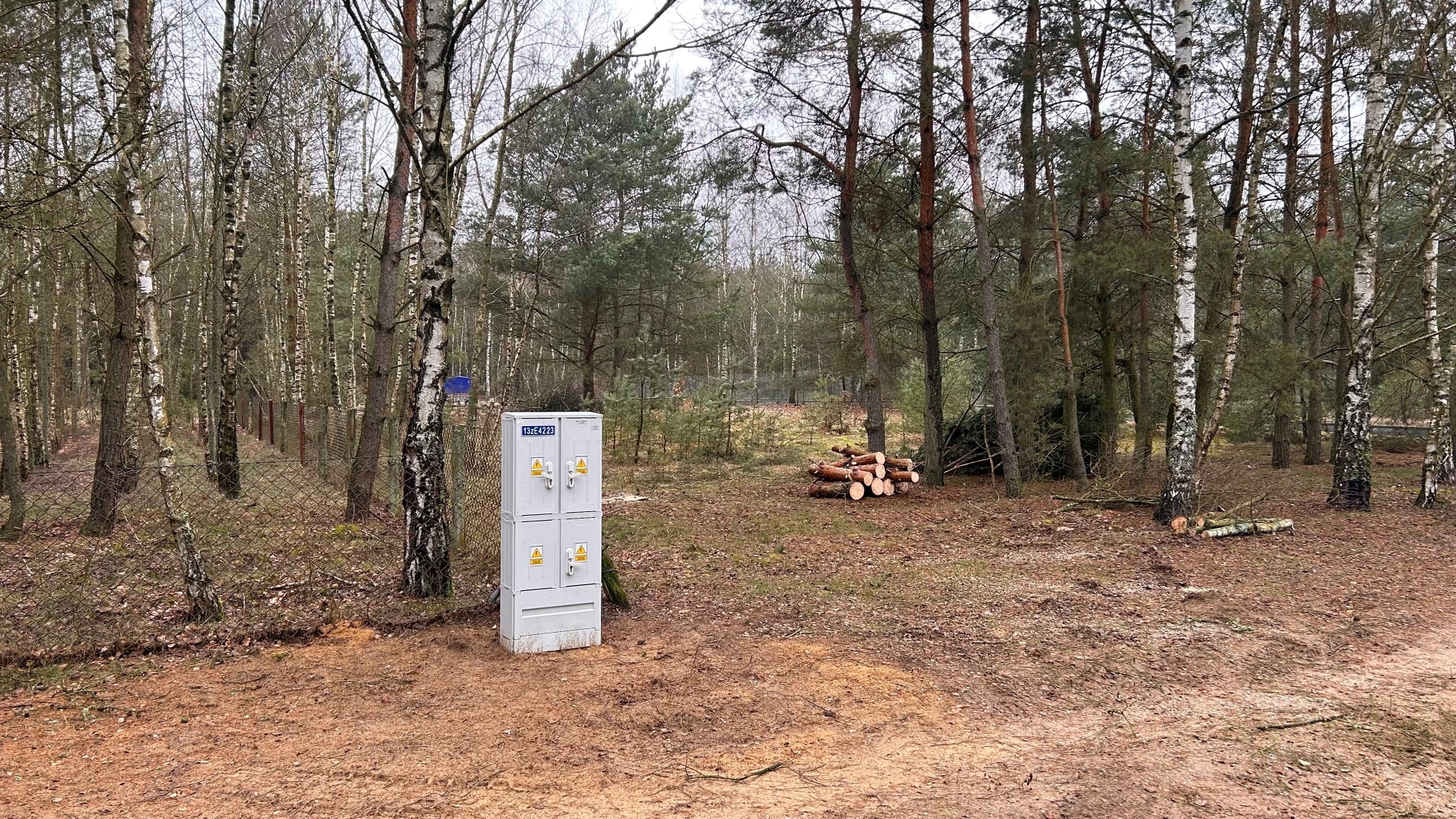Building a house is a major challenge—one that we usually face only once in a lifetime, and most often without any prior experience. Taking on such a serious task requires preparation and knowledge. Only knowledge can protect us from poor decisions and, as a result, from losing money invested in land on which little or nothing can be built.
One of the first questions to answer concerns the building plot itself—specifically, what characteristics it should have. Below are the key aspects that should be verified before making a purchase.
Is the plot covered by a Local Development Plan (MPZP) or issued Building Conditions (WZ)?
The first step before purchasing a plot is to check the zoning regulations applicable to the land. If the plot is covered by a Local Development Plan (MPZP), you should visit the municipal office to review the applicable provisions.
The MPZP contains information such as land use designation, minimum plot size for building placement, the maximum buildable area, and the required green area. It also affects not only the volume of the house but also its appearance, often providing specific guidelines for roof shape and pitch, tile color, building height, and even fence design.
If no MPZP is in place for the area, you must consult the spatial development study and ideally apply for Building Conditions (WZ) before making a purchase. Whether and what kind of building can be constructed on a specific plot is determined solely by the MPZP or WZ. Without one of these documents, construction is not permitted.
If the plot is covered by the MPZP or has been issued WZ, you can then apply for a building permit or submit a construction notice. Even the simplest form of construction, such as notifying an individual recreational building, still requires either an MPZP or WZ document for review.
Note that land designated for single-family residential development is not the same as land for recreational buildings. Residential construction requires full permitting or formal notice with complete documentation, though no construction manager is required under the notice procedure. To use the least complicated and fastest procedure, the land must be designated for recreational or summer development. Similarly, to build a residential home, the land must be designated for single-family residential housing.
Is there access to a road, and what is its legal status?
While we rarely buy land without visiting it first—and since we were able to reach it—we may assume that the plot has formal access to a road. However, this is not always legally the case. It may turn out that the road passes through a neighbor’s land, in which case the neighbor has the right to charge for access or, worse, deny usage.
According to the Construction Law, every building plot must have access to a road. If no access is visible on the map, the authorities will not issue a building permit. It is possible to use a road through a neighbor’s land, but this requires the establishment of a road easement or a compulsory road.
The best-case scenario is when the plot has access to a municipal road. In such cases, the municipality is responsible for road maintenance, paving, snow removal, lighting, and general upkeep.
If the plot has no direct road access, you will have to consider one of the following options:
- Establish a right-of-way (road easement),
- Buy a shared ownership in a designated access road,
- Purchase an adjacent plot that has public road access.
A land easement is based on Article 285 §1 of the Polish Civil Code, which allows a property to be encumbered for the benefit of another property’s owner, granting usage rights. Unlike a personal easement, a land easement is tied to the property, not the owner, and passes to each successive owner.
Such an easement can be established through a notarial agreement and registered in the land and mortgage register, or via court order (as a compulsory road). A compulsory road may involve fees payable to the landowner whose property the road crosses. Sometimes, obtaining such access is impossible due to the landowner’s refusal. That’s why it’s wise to discuss and formalize an agreement with the neighbor before buying the land.
Are utilities available, and what are the connection terms?
A fully serviced plot (with utility connections) is the most attractive—but also the most expensive. When buying unserviced land, you must check how far the water, sewage, electricity, and gas networks are from the plot (if planning to use gas). You can obtain this information from the municipal or county office, or by contacting utility providers directly for accurate cost and feasibility information.
If there is no access to the sewage system, the situation is manageable. Many investors forego a connection due to distance. Alternatives include installing a septic tank or a domestic wastewater treatment plant.
Connecting to the water network is more complicated but usually proceeds smoothly (within 3–6 months), depending on the distance to the main. The best case is when the water main is in the road by the plot. Then, a simple tap connection is made, and a water meter pit is installed on the plot. The total cost of this setup typically ranges from PLN 4,000 to 6,000.
If the water main is farther away, a dedicated water supply line must be built at a cost of PLN 200–400 per meter.
The most problematic issue is lack of electricity access. Even if a neighboring plot is connected, this doesn’t guarantee a quick hookup. Waiting time often exceeds six months, and energy providers typically quote up to 18 months in contracts—with delays not uncommon. In urgent situations, consider applying for temporary construction power, which is usually provided within 1–3 months, but is significantly more expensive than a permanent connection.
Are there surrounding features that require mandatory setback distances?
Owning a plot doesn’t mean you can freely place your building anywhere. There are many regulations to follow.
First, there are technical conditions defined by the Ministry, governing how buildings are designed and located. According to these regulations:
- A building must be placed at least 4 meters from the boundary if the wall facing that boundary has windows or doors.
- A 3-meter distance is required if the wall has no openings.
Exceptions allow buildings to be located 1.5 meters from the boundary, or even on the boundary, depending on local zoning plans (MPZP or WZ). This is also allowed for plots narrower than 16 meters.
Fire safety regulations may require additional setbacks based on construction technology. For example:
- Two buildings with NRO (non-fire-spreading) walls should be at least 8 meters apart if they have windows facing each other.
- If both buildings have blank walls on that side, a 6-meter distance is sufficient.
- If either building is classified as RO (fire-spreading), such as with timber façades, the minimum distance increases to 16 meters, regardless of windows.
- If one is RO and the other NRO, the minimum is 12 meters.
Additionally, there are setback rules from forests.
- Detached houses up to 3 storeys and outbuildings/garages up to 2 car bays must be placed 4 meters from the forest boundary if it’s on a neighboring plot.
- If the forest is on the same plot as the house, it may be placed at any distance.
However, such buildings must lack explosion-risk rooms and meet fire protection requirements. Otherwise, the minimum setback is 12 meters.
Is the plot located in a protected area?
This information can be found in the MPZP or local development study. This is very important, as protected areas often prohibit or heavily restrict construction—which, while burdensome, may be worth accepting for nature lovers.
In general, national parks and nature reserves prohibit residential development. An exception may apply if a plot lies within both a national park and a protected landscape zone—though this is rare.
Buffer zones around parks or reserves may allow construction, but with strict conditions that are often hard to meet.
Landscape parks usually prohibit multi-family or terraced housing, but often allow single-family homes or recreational buildings. These limitations are defined in provincial council resolutions. Be sure to check the protection plan of the specific park, which may affect both the location and design of your building. Even tree planting or removal, or mowing, may require approval.
Another restricted zone is the Natura 2000 area. Construction rules are detailed in protection plans issued by the Ministry of Environment, covering land use, building locations, infrastructure, afforestation restrictions, and water management. Environmental impact assessments are usually required before obtaining a building permit.
Historic or archaeological zones can also restrict building rights. If a monument is nearby or on the plot, additional supervision, extended timelines, and higher costs are expected.
For plots with shorelines, buildings must be set back at least 100 meters from the water.
Is the land suitable for construction?
Soil and water conditions significantly impact future construction. Some soils require special foundations, increasing costs, while others are unsuitable for building altogether.
Ideal soils are non-cohesive, such as sands or gravels, which are water-permeable and settle uniformly.
Cohesive soils, like clay or loamy sands, are less ideal—they retain moisture, are frost-susceptible, and may cause uneven building settlement over several years.
Worse are organic soils, like peat or mud, which deform easily and can “move” the building, causing cracks. Water in these soils is also acidic, negatively affecting construction materials.
Man-made soils (landfills) can also be problematic if not properly compacted.
Another important factor is the groundwater level. High levels may preclude basements or complicate foundation works. Excavations may require pumping and waterproofing, increasing costs.
Always conduct a geotechnical survey—mandatory for building permits. The cost is unavoidable, but early testing can save you from investing in unbuildable land.
How to perform a full technical analysis?
As shown, there is much to verify when purchasing a building plot. It is helpful to choose a house design in advance—knowing the building’s size, roof pitch, number of storeys, and façade type helps assess the plot’s suitability.
If you want us to perform a formal analysis of your plot, contact us. Our architectural team will review the MPZP / WZ against your house design, verify road access and legal status, and check if distance regulations permit construction. Cost of analysis is quoted individually.
Submit your plot for analysis
Want to be sure you can build your dream home on your plot? Send us the relevant documents, and we’ll provide a comprehensive assessment.
info@modularen.com
Phone
+ 48 536 838 863
+ 48 535 602 351
Address
Modularen Sp. z o.o. ul. Puławska 228/1 02-670 Warszawa







